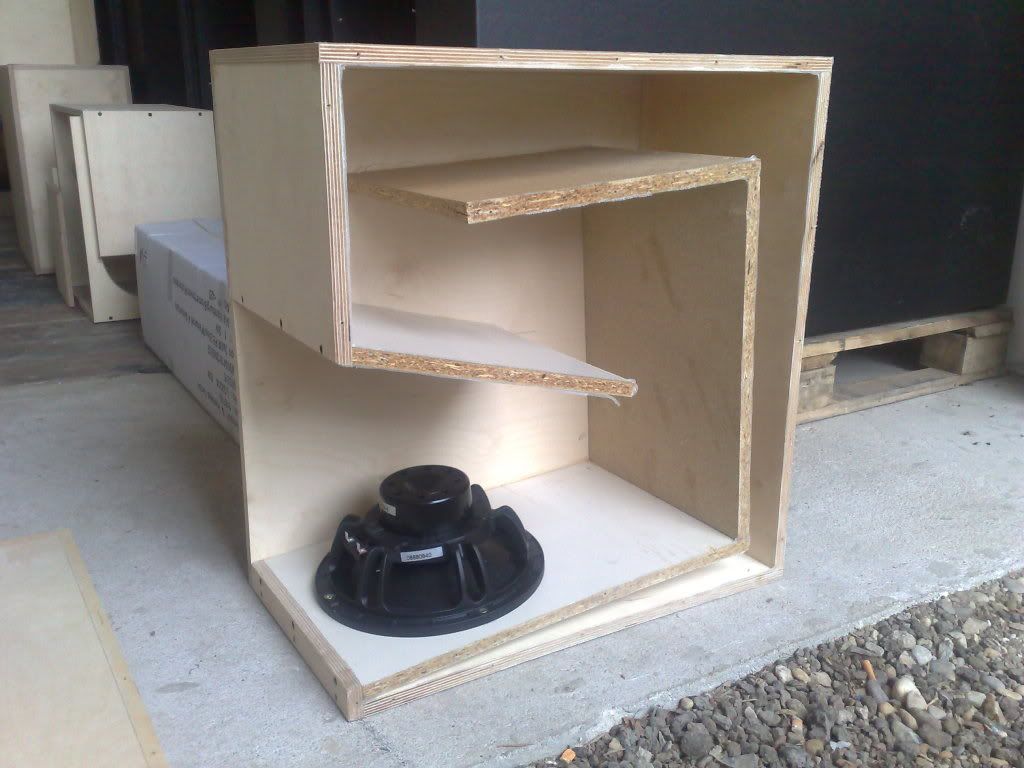Hanatsu and Jason were talking about Linkwitz Transform, so I thought I'd take a quick look to see how it would perform, compared to a tapped horn.
Basically figure out which box would give the most "bang for the buck."
Here's where I'm coming from on this one:
I think that loudspeakers are basically air pumps. For the most part, I don't care what the parameters are, I don't care what the efficiency is, all I care is how much air can a loudspeaker displace.
Yes, there are some exceptions; if I'm trying to get a specific bandwidth from a driver, sometimes I'll need something with a specific set of parameters.
But that's the exception to the rule. The rest of the time, all I really care about is displacement. There's no replacement for displacement. I don't care if your ScanSpeak subwoofer was sprinkled with pixie dust and dipped in gold, a $50 Pyle 15" is going to kick it's ass if it can displace more air. (Pyle is the number one brand that I use over and over in my projects, followed by Dayton and Peerless.)
So let's put this to the test...
Basically figure out which box would give the most "bang for the buck."
Here's where I'm coming from on this one:
I think that loudspeakers are basically air pumps. For the most part, I don't care what the parameters are, I don't care what the efficiency is, all I care is how much air can a loudspeaker displace.
Yes, there are some exceptions; if I'm trying to get a specific bandwidth from a driver, sometimes I'll need something with a specific set of parameters.
But that's the exception to the rule. The rest of the time, all I really care about is displacement. There's no replacement for displacement. I don't care if your ScanSpeak subwoofer was sprinkled with pixie dust and dipped in gold, a $50 Pyle 15" is going to kick it's ass if it can displace more air. (Pyle is the number one brand that I use over and over in my projects, followed by Dayton and Peerless.)
So let's put this to the test...

















